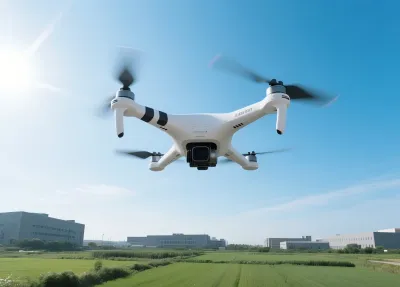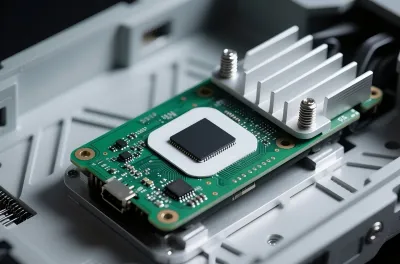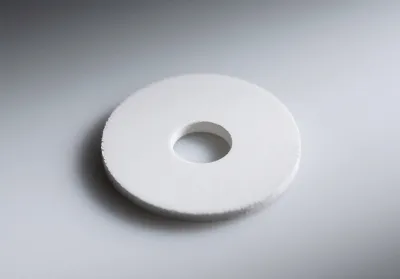
The Cooling Dilemma: The Crisis of "High-Altitude Heatstroke" in Drones
The "heart" and "brain" of drones often operate at the edge of high temperatures. Increased motor power delivers strong performance, but the heat intensity per square centimeter rivals that of a small electric heater. Flight control chips, GPS modules, and other densely arranged components struggle to dissipate heat in compact bodies. Data shows that for every 10°C rise in electronic component temperature, their lifespan is halved, while motor overheating leading to power loss is a major cause of crashes. Solving the cooling issue has become key to unlocking drone performance.Boron Nitride Thermal Pads: The Black Tech That Makes Heat "Run"
Among various cooling materials, boron nitride thermal pads with a thermal conductivity of 12-20W/mK stand out as "cooling marvels," thanks to their "three highs" advantages: high thermal conductivity, low density, and low volume resistivity.High thermal conductivity is the core feature. The crystal structure of boron nitride allows heat to transfer rapidly through phonons, creating a "high-speed channel." Heat from chips and motors is quickly conducted to the cooling shell via the pad, avoiding localized hotspots. Compared to traditional silicone pads with 3-5W/mK thermal conductivity, boron nitride pads improve efficiency by 3-6 times, instantly dissipating large amounts of heat.
Low density meets lightweight requirements. Drones are extremely weight-sensitive, where every additional gram may affect battery life and maneuverability. Boron nitride pads have a density of about 2.2g/cm³, over 60% lighter than metal cooling plates, providing efficient cooling without adding extra weight, allowing drones to fly longer and more steadily.
Low volume resistivity ensures electronic safety. The complex internal circuitry of drones makes it critical to avoid short circuits caused by overly conductive cooling materials. Boron nitride is an excellent insulating material, with volume resistivity exceeding 10¹⁴Ω·cm. It transfers heat while isolating electrical interference, adding "dual protection" for precision circuits.

From Lab to Sky: The Cooling Revolution in Practice
The value of boron nitride thermal pads has been proven in real-world applications. For example, an agricultural drone initially suffered from motor overheating, limiting single operations to just 20 minutes with frequent power drops. After upgrading to 15W/mK boron nitride pads, motor temperatures dropped by 25°C, single operations extended to 35 minutes, and failure rates decreased by 70%, significantly improving efficiency.Industrial inspection drones equipped with multispectral cameras and LiDAR demand even higher cooling performance. After embedding 18W/mK boron nitride pads between the motherboard and cooling shell, these drones operated continuously for 4 hours in high-temperature environments, with core chip temperatures stable below 55°C and zero data transmission interruptions, ensuring accurate inspection results. These small pads are reshaping drone cooling logic.

Technological Evolution: The Advancement of Cooling Materials
As drones trend toward miniaturization and higher power, cooling material requirements grow stricter. Boron nitride pads continue to evolve, transitioning from single structures to composite-enhanced designs, optimizing crystal orientation and filler ratios to improve thermal conductivity and mechanical strength. In the future, they may not only adapt to higher-power motors and chips but also integrate with flexible cooling structures to fit complex internal curves, further upgrading cooling efficiency.Drone breakthroughs rely on material technology. Boron nitride thermal pads prove that solving cooling issues doesn’t require bulky devices—lightweight, efficient material innovations can give drones stronger "wings." With heat no longer a constraint, the sky becomes wider for drones. Sheen, with the vision of "defining cooling boundaries through material innovation," is committed to developing high-thermal-conductivity materials, ensuring every drone soars safely under technological protection.

 English
English
 usheenthermal
usheenthermal



